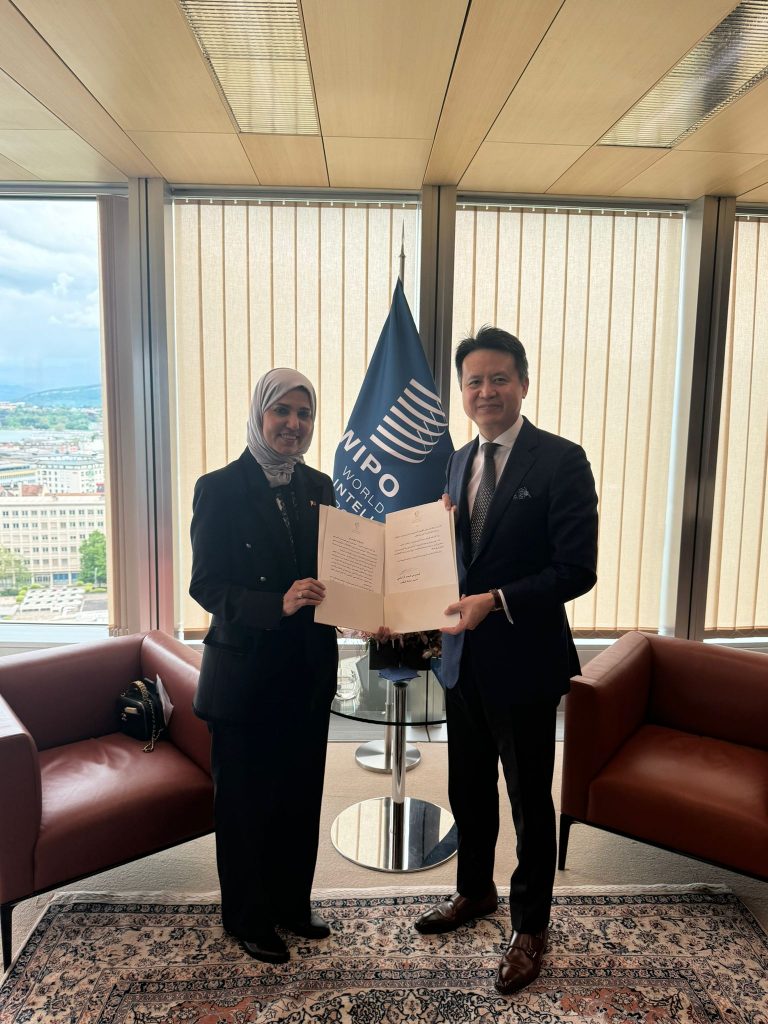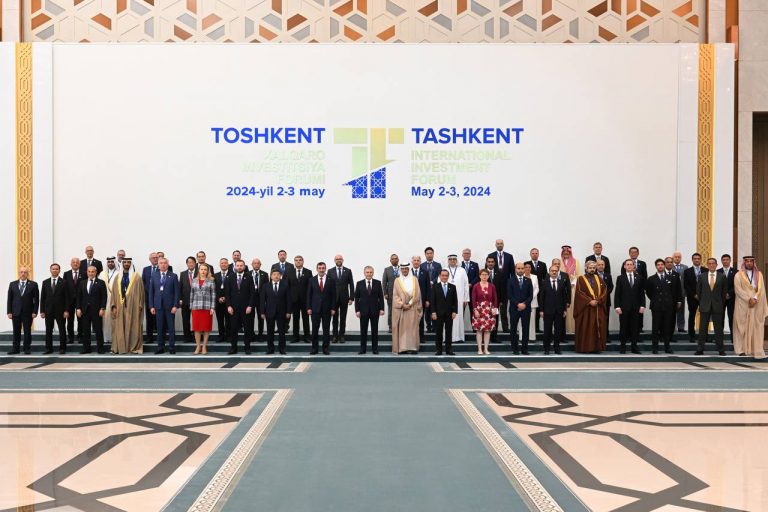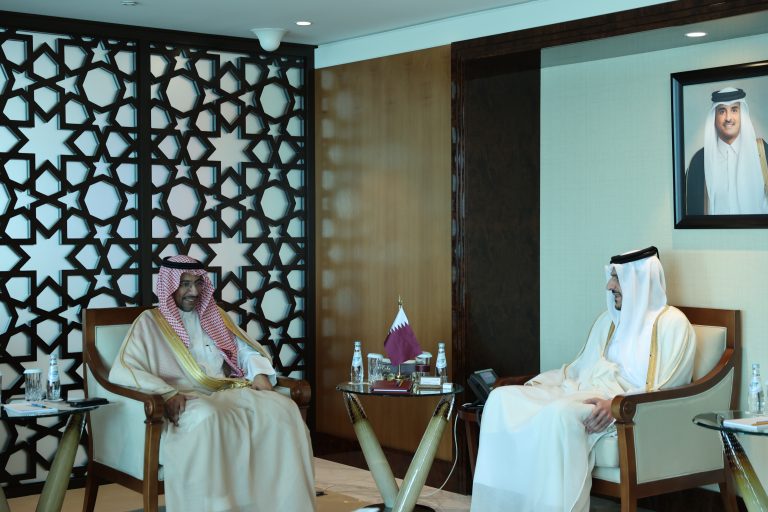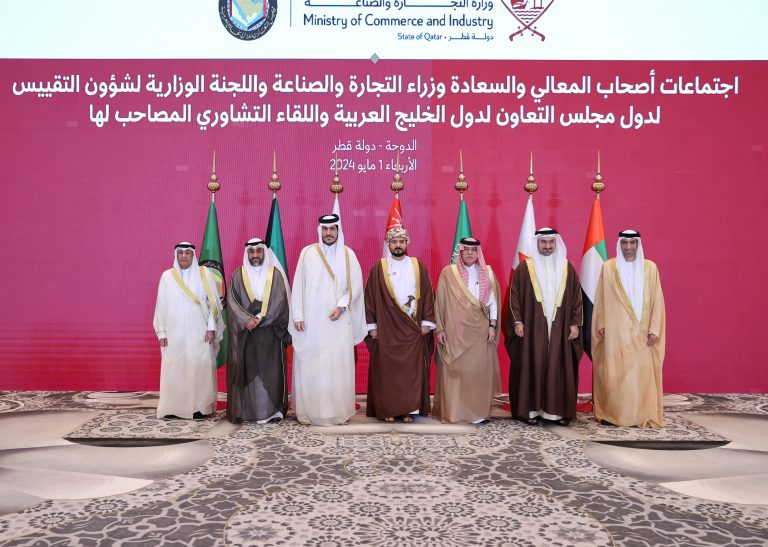The Ministry of Economy and Commerce has announced the launch of an electronic service for patent registration. The service is accessible to members of the public and intellectual property agents through the Ministry’s website.
The launch of this service and other relevant services, which will be added successively, comes as part of the Ministry’s efforts to continuously improve and develop its services in a bid to upgrade the Business Services System in Qatar and facilitate the delivery of services through the adoption of global best practices in the field of intellectual property. The new service also provides a high-quality integrated electronic system that empowers inventors and protects intellectual property rights and the financial exclusive rights of the patent owner in accordance with applicable laws, agreements and international treaties.
According to the new electronic patent registration system, the submission of applications and their review is conducted electronically to ensure service quality and that applications are completed at the scheduled time before a final decision on the registration of intellectual property is reached. The system will enable the public to easily complete the procedures without visiting the Ministry, and will save clients time and efforts.
Conditions that must be met in the patent application
The Ministry outlined the conditions that should be met in the patent application as follows. First, novelty, meaning new; the invention should not be disclosed before the application is submitted. The publication and issuance of a patent or the partial or full exploitation of the invention in Qatar or abroad should also not take place before an application is filed to the office or dated.
The invention should also have the potential for industrial application in general, regardless of whether the invention is related to physical goods, an industrial process or a manufacturing method.
The third condition that must be met in the patent application is creativity. Creativity is linked to novelty but assessed separately. Within this context, the invention should not be an obvious one or previously known to experts. It should also contribute to progress in the industrial field.
Procedures to submit a patent registration application through the Ministry’s website:
The Ministry outlined the steps for patent registration through its websitehttps://services.mec.gov.qa. The service allows the applicant to register the invention and obtain a certificate proving exclusive rights to the invention if all conditions are met.
The applicant should log in to the system, choose whether to file the application under the Patent Cooperation Treaty (PCT) or Paris Convention for the Protection of Industrial Property; complete the application form; fill out the names of the inventors, invention, priorities (if applicable), and agent data (if applicable); and attach the required documents.
Once the application is submitted, the formal examination process starts, with the possibility that the application can be returned after providing justification. Once the examination process is concluded and the application request is approved, the applicant must pay the registration fees and the first and second year fees, depending on the status of the applicant as determined at the beginning of the registration process.
After the payment of fees, an email including the number of the patent is sent to the applicant. The email will outline the obligations that should be met within a legal deadline, in addition to the annual fees that must be paid.
After the completion of the registration process, the applicant is awarded an application number QA and is free to manufacture, waive, license and sell the invention while awaiting the patent issuance. The applicant should, however, continue to pay the annual fee (before and after obtaining the patent). After receiving the number, the applicant can pay the formal examination fees (legal and technical) within six months. The application filed under the PCT system is then processed after meeting all the examination requirements.
Applications filed under the Paris Convention for the Protection of Industrial Property will be included after meeting all the examination requirements and a year after submitting it to the Patent Office, in line with international laws and regulations.
The patent examiner, who is specialized in the technical and legal examination of the application, is entitled to accept, amend or reject the application.
If the examiner accepts the application, an email including the acceptance letter and the fees due is sent to the applicant. After the payment of the fees for the publication of the application acceptance, an email including the number of the newspaper where the decision will be published is sent to the applicant, who must wait 60 days after publication. During this 60-day opposition period, anyone may give a notice of opposition to the patent. If no notice is filed, an email is sent instructing the applicant to pay the patent certificate issuance fees.
Once the fees are paid, an email including the number of the paper where the number of the patent certificate will be published, will be sent to the applicant, who must continue to pay the fees for a period of 20 years.
Information about patents
The Ministry provided information about patents, defining the applicant as the natural person or legal entity that holds the intellectual property right. The agent, on the other hand, is the natural person who is assigned by the owner of the intellectual property right to undertake all measures on his behalf in Qatar.
The inventor is a natural person who, owing to his efforts, created an invention. The inventor may be working on his own behalf or commissioned by others to create the invention, provided that the conditions for a patent including novelty, creativity and the potential for industrial application are met whether the patent relates to the product, its manufacturing method or both.
The Ministry noted that the patent is the certificate or official document granted by the state (Patent Office- Intellectual Property Rights Protection Department) to the inventor. The patent grants the inventor the exclusive right to commercially exploit the invention for a specified period and under specific circumstances, in accordance with the provisions of the national law and international conventions and treaties.
The benefits of registering a patent and legal protection for the inventor
The Ministry outlined the benefits of registering a patent and protecting the rights of the inventor to the patent in line with the law, noting that it guarantees the patent holder the right to use the invention or commercially exploit it by selling licenses to manufacture the product in the industrial field.
The patent also protects the intellectual property rights of the inventor, which cannot be waived or abolished even after the patent term expires, which is the period during which the inventor’s financial rights are protected. Others cannot prohibit the inventor from the production of the product or the use of manufacturing methods.
Other benefits also include protecting the inventor’s rights, such as the right to sell, mortgage, donate and waive his right to the patent for free or in exchange for a fee. Patent registration also protects the material rights of the inventor and patent holder throughout the patent term. Once the patent term expires, protection ceases to exist and the patent becomes public, whereby anyone can use and commercially exploit the invention without restrictions or the need to obtain a license. As an asset, a patent can also be impounded by a creditor to collect the patent holder’s debts.
The implication of failing to register an invention
The Ministry noted that the failure to register an invention will allow others to create the same invention and legally exploit it within the state.
Others could also register the invention as their own, meaning the original inventor loses the intellectual property rights to the invention for failing to register it.
In the event of a legal dispute, the original inventor will be responsible to submit proof of his right for failing to register it at the Patent Office. The original inventor will also be unable to bar others from commercially exploiting the invention.
Examples of the registration benefits and the disadvantages of failing to register.
The Ministry has provided several examples of the benefits of registering the invention and the repercussions of failing to do so in a bid to raise awareness about the importance of filing for registration at the Department of Intellectual Property Rights Protection in compliance with laws and regulations.
For instance, a person invented an advanced car engine two years ago, but hesitated to apply for a patent. In the meantime, another person created the same invention, devised a way to manufacture it and filed for a patent at the Patent Office. This example highlights the importance of applying for a patent first, to protect the original inventor’s right to the product.
The Ministry provided another example in which a physicist published a scientific paper in an international science magazine about water desalination using microwaves, and then applied for a patent at the Patent Office. During the technical examination of the application, the examiner found that the invention was published in the science magazine prior to the submission of the application, which violated the novelty condition to obtain a patent and led to the rejection of the application.
In a third example, the ministry demonstrated the importance of registering a patent in terms of protecting the patent holder and the state’s exclusive rights to financial returns. In this case, a national research body developed a medication that can cure a dangerous disease. The medication included a chemical compound that is far more effective than current medications on the market. The new medication also had a high success rate in curing patients from a chronic disease. The research body applied to register the medication at the Patent Office. After conducting the necessary research and examining the medication, a patent certificate was issued. The research body then applied for the necessary permits to market the medication with a high cure rate at a competitive price, in addition to granting licenses for the manufacturing of the medication and securing financial returns that were allotted for more research and development.
In another example of the benefits of applying for a patent, an inventor created a new machine and wanted to protect his invention by applying for a patent across different states at once. His colleague advised him to visit the Patent Office to inquire about the procedures. The Office informed the inventor that he needs to register his invention under the Patent Cooperation Treaty (PCT) through the new electronic system for patent registration. He then obtained an international filing date applicable in all PCT Contracting States. The research report showed that the application is valid, enabling the inventor to proceed with the submission of his application on the national level and in countries where he wished to obtain a patent and protect his invention.
Patent registration fees
Students are exempt from patent registration fees, while individuals must pay 1,000 Qatari riyals. Educational and research institutions, as well as companies and organizations, must pay 2,000 Qatari riyals.
For technical examination fees, students must pay 100 Qatari riyals, while individuals must pay 2,500 riyals. Educational and research institutions, as well as companies and organizations, must pay 5,000 Qatari riyals.
For the newspaper publication fees of the patent application acceptance, students must pay 50 Qatari riyals, while individuals must pay 200 riyals. Educational and research institutions, as well as companies and organizations, must pay 400 Qatari riyals.
For the patent certificate issuance fees, students must pay 100 Qatari riyals while individuals must pay 1,000 riyals. Educational and research institutions, as well as companies and organizations, are charged 2,000 Qatari riyals.
The Ministry of Economy and Commerce had launched an online service, enabling the public and intellectual property agents to file for intellectual property rights certificates through the Ministry’s website.
The launch of this service came as part of the Ministry’s efforts to continuously improve and develop its services in a bid to upgrade the Business Services System in Qatar and facilitate the delivery of services through the adoption of global best practices in the field of intellectual property. The new service also provides a high-quality integrated electronic system for authors and holders of neighboring rights in order to protect literary and artistic works in accordance with applicable laws, agreements and international treaties.







